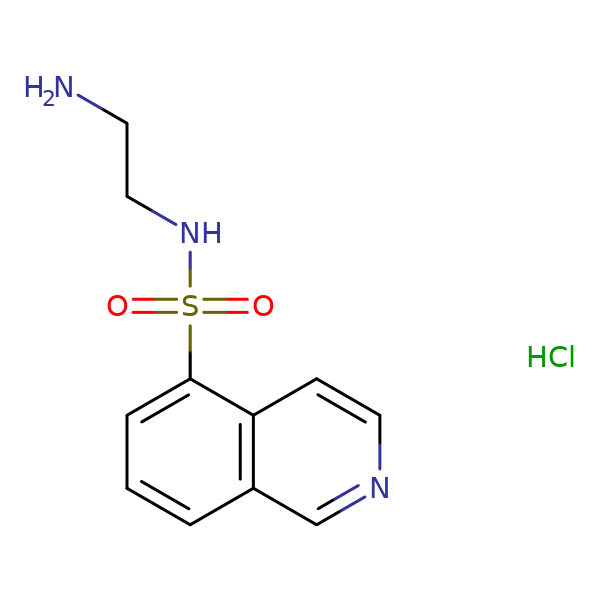
H-9 hydrochloride
CAS No. 116970-50-4
H-9 hydrochloride( —— )
Catalog No. M21838 CAS No. 116970-50-4
H-9 hydrochloride inhibits PKA (Ki=1.9 μM), PKC (Ki=18 μM; cGKI (PKG) =0.87 μM; MLCK=70 μM).
Purity : >98% (HPLC)
 COA
COA
 Datasheet
Datasheet
 HNMR
HNMR
 HPLC
HPLC
 MSDS
MSDS
 Handing Instructions
Handing Instructions
| Size | Price / USD | Stock | Quantity |
| 10MG | 76 | In Stock |


|
| 50MG | 320 | In Stock |


|
| 100MG | Get Quote | In Stock |


|
| 200MG | Get Quote | In Stock |


|
| 500MG | Get Quote | In Stock |


|
| 1G | Get Quote | In Stock |


|
Biological Information
-
Product NameH-9 hydrochloride
-
NoteResearch use only, not for human use.
-
Brief DescriptionH-9 hydrochloride inhibits PKA (Ki=1.9 μM), PKC (Ki=18 μM; cGKI (PKG) =0.87 μM; MLCK=70 μM).
-
DescriptionH-9 hydrochloride inhibits PKA (Ki=1.9 μM), PKC (Ki=18 μM; cGKI (PKG) =0.87 μM; MLCK=70 μM). It has shown to dramatically reduce the GABA response of GABAA currents in retinal rod bipolar cells as well as inhibit smooth muscle cell relaxation induced by cGRP. H-9 dihydrochloride has also been used for purification of protein kinases in ligand affinity chromatography.
-
In Vitro——
-
In Vivo——
-
Synonyms——
-
PathwayOthers
-
TargetOther Targets
-
RecptorcGKI
-
Research Area——
-
Indication——
Chemical Information
-
CAS Number116970-50-4
-
Formula Weight287.77
-
Molecular FormulaC11H13N3O2S?HCl
-
Purity>98% (HPLC)
-
Solubility——
-
SMILESC1=CC2=C(C=CN=C2)C(=C1)S(=O)(=O)NCCN.Cl
-
Chemical Name——
Shipping & Storage Information
-
Storage(-20℃)
-
ShippingWith Ice Pack
-
Stability≥ 2 years
Reference
1. Wolf, M., et al. 1985. J. Biol. Chem. 260: 15718-15722. PMID: 4066694
2. Inagaki, M., et al. 1985. J. Biol. Chem. 260: 2922-2925. PMID: 2982842
3. Gillette, M.A., et al. 1996. J. Neurophysiol. 76: 3070-3086. PMID: 8930256
molnova catalog



related products
-
Comanthosid A
Comanthoside A is a naturally occurring flavonoid glycoside isolated from Comanthosphace japonica.Comanthoside A is also a key intermediate in the synthesis of Linaroside and Comanthoside B. Comanthoside A is a natural flavonoid glycoside isolated from Comanthosphace japonica.
-
Fmoc-Phe(4-CN)-OH
Fmoc-Phe(4-CN)-OH?is an N-Fmoc protected phenylalanine derivative and potentially useful synthetic intermediate.
-
Toltrazuril
Toltrazuril is an antiprotozoal agent that acts upon Coccidia parasites.



 Cart
Cart
 sales@molnova.com
sales@molnova.com


